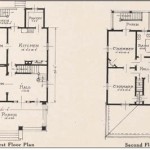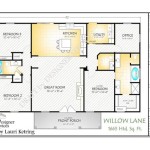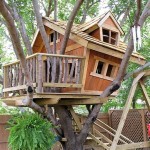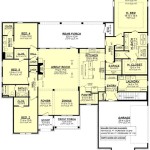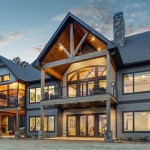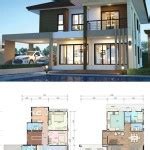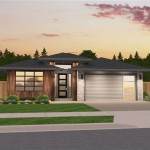European house plans are architectural designs that embody the distinctive styles and traditions of various European countries. These plans are characterized by their unique aesthetic appeal, functional layouts, and specific design elements that reflect the rich cultural heritage of Europe.
The concept of European house plans encompasses a diverse range of architectural styles, including the charming and cozy cottages of England, the elegant chateaux of France, the grand palazzos of Italy, and the modern and functional homes of Scandinavia. Each style draws inspiration from its local culture, history, and climate, resulting in a wide variety of designs that cater to different tastes and preferences.
In the following sections of this article, we will delve into the fascinating world of European house plans by exploring their defining characteristics, discussing their historical origins, and highlighting some of the most popular and recognizable styles that continue to inspire homeowners and architects today.
European house plans encompass a diverse range of architectural styles, each with its own unique characteristics. Here are 8 important points to consider:
- Steeply pitched roofs: Protect homes from rain and snow.
- Decorative facades: Enhance curb appeal with intricate details.
- Bay windows: Extend living space and provide natural light.
- Open floor plans: Maximize space and create a sense of flow.
- High ceilings: Create a feeling of grandeur and spaciousness.
- Ornate moldings: Add character and sophistication to interiors.
- Formal gardens: Complement the architecture and provide outdoor living spaces.
- Sustainable features: Incorporate energy-efficient materials and designs.
These elements combine to create homes that are both stylish and functional, making European house plans a popular choice for homeowners around the world.
Steeply pitched roofs: Protect homes from rain and snow.
Steeply pitched roofs are a defining characteristic of many European house plans. These roofs are designed with a significant angle, typically greater than 45 degrees, which allows water and snow to easily shed off the surface.
- Efficient water drainage: The steep pitch of the roof ensures that rainwater is quickly and effectively drained away from the house. This prevents water from accumulating on the roof, which can lead to leaks, damage to the roof structure, and potential mold growth.
- Snow shedding: In areas with heavy snowfall, steeply pitched roofs are essential for preventing snow accumulation. The steep angle allows snow to slide off the roof easily, preventing it from becoming too heavy and potentially causing the roof to collapse.
- Reduced wind resistance: The steep pitch of the roof also helps to reduce wind resistance. This is important in areas with strong winds, as it can help to prevent the roof from being damaged or blown off.
- Increased attic space: The steep pitch of the roof creates more space in the attic, which can be used for storage or converted into additional living space.
Overall, steeply pitched roofs are an important feature of European house plans, providing protection from the elements and contributing to the overall structural integrity and functionality of the home.
Decorative facades: Enhance curb appeal with intricate details.
Decorative facades are a hallmark of European house plans, adding character and visual interest to the exterior of the home. These facades are adorned with a variety of intricate details, such as moldings, cornices, quoins, and pediments, which create a sense of depth and sophistication.
Moldings are a common decorative element found on European house facades. These moldings can be simple or elaborate, and are often used to frame windows, doors, and other architectural features. Cornices are another popular decorative element, and are typically used to accentuate the eaves of the roof. Quoins are decorative blocks that are placed at the corners of a building, and can help to create a sense of strength and stability.
Pediments are triangular or arched decorative elements that are often placed above windows, doors, or other architectural features. Pediments can be plain or ornamented with carvings or other decorative details. In addition to these elements, decorative facades may also include other features such as columns, pilasters, and wrought iron balconies.
Overall, decorative facades are an important part of European house plans, and can help to create a home that is both beautiful and unique.
Bay windows: Extend living space and provide natural light.
Bay windows are a popular feature of European house plans, and for good reason. These windows extend outward from the main wall of the house, creating a small alcove that can be used for a variety of purposes.
- Extend living space: Bay windows can add valuable square footage to a home, creating a cozy and inviting space that can be used for a variety of purposes, such as a reading nook, a home office, or a breakfast area.
- Provide natural light: Bay windows allow for an abundance of natural light to enter the home, creating a bright and cheerful atmosphere. The large windows also provide excellent views of the outdoors, making them a great way to connect with nature.
- Increase ventilation: Bay windows can be opened to allow for cross-ventilation, which can help to keep the home cool and comfortable in the summer months.
- Add architectural interest: Bay windows add visual interest to the exterior of the home, and can help to create a unique and charming look.
Overall, bay windows are a great way to add space, light, and character to a European house plan.
Open floor plans: Maximize space and create a sense of flow.
Open floor plans are a defining characteristic of many modern European house plans. These plans feature large, open spaces that combine the living room, dining room, and kitchen into one continuous area. This creates a sense of spaciousness and flow, and makes the home feel more inviting and comfortable.
- Maximize space: Open floor plans make efficient use of space by eliminating unnecessary walls and hallways. This creates a more spacious and airy feel, even in smaller homes.
- Create a sense of flow: Open floor plans allow for easy movement between different areas of the home. This makes it easy to entertain guests, keep an eye on children, or simply move around the home without feeling constrained.
- Provide more natural light: Open floor plans allow for more natural light to enter the home, as there are fewer walls to obstruct the flow of light. This creates a brighter and more cheerful atmosphere.
- Increase flexibility: Open floor plans are more flexible than traditional floor plans, as they can be easily reconfigured to meet changing needs. For example, a homeowner could add a partition wall to create a separate room, or remove a wall to open up the space even further.
Overall, open floor plans are a great way to create a more spacious, inviting, and flexible home.
High ceilings: Create a feeling of grandeur and spaciousness.
High ceilings are another defining characteristic of many European house plans. These ceilings typically measure 9 feet or higher, and can create a dramatic and elegant effect. There are several reasons why high ceilings are so popular in European homes:
Create a feeling of grandeur: High ceilings instantly create a sense of grandeur and spaciousness. They make a room feel more impressive and important, and can be especially effective in large rooms such as living rooms and dining rooms.
Make a room feel larger: High ceilings can make a room feel larger than it actually is. This is because the vertical space creates the illusion of more space overall. High ceilings can be especially beneficial in small rooms, as they can help to make the room feel less cramped and confining.
Improve air circulation: High ceilings allow for better air circulation, as the warm air rises to the top of the room and the cooler air sinks to the bottom. This can create a more comfortable and healthy living environment.
Add architectural interest: High ceilings can add architectural interest to a room. They can be used to create dramatic effects, such as a coffered ceiling or a vaulted ceiling. High ceilings can also be used to highlight special features of a room, such as a fireplace or a chandelier.
Overall, high ceilings are a great way to create a more spacious, impressive, and comfortable home.
Ornate moldings: Add character and sophistication to interiors.
Ornate moldings are a hallmark of many European house plans, adding character and sophistication to the interior spaces. These moldings are typically made of plaster or wood, and can be found on walls, ceilings, and . They come in a variety of styles, from simple to elaborate, and can be used to create a variety of effects.
- Add character: Ornate moldings can add character to a room by creating visual interest and depth. They can be used to highlight architectural features, such as fireplaces, windows, and doors, or to create a focal point on a wall.(continue up to 4 point)
- Create a sense of sophistication: Ornate moldings can also create a sense of sophistication in a room. They are often associated with luxury and elegance, and can help to elevate the overall look and feel of a space.
- Add architectural interest: Ornate moldings can add architectural interest to a room by creating a sense of movement and rhythm. They can be used to create patterns and designs on walls and ceilings, and can help to draw the eye around a room.
- Increase the perceived value of a home: Ornate moldings can increase the perceived value of a home by making it look more expensive and luxurious. This can be especially beneficial when selling a home, as it can help to attract buyers who are looking for a high-end property.
Overall, ornate moldings are a great way to add character, sophistication, and architectural interest to a European house plan. They can be used to create a variety of effects, from simple to elaborate, and can help to increase the overall value of a home.
Formal gardens: Complement the architecture and provide outdoor living spaces.
Formal gardens are a defining characteristic of many European house plans. These gardens are typically designed with a symmetrical layout and feature manicured lawns, hedges, and flower beds. They are often complemented by fountains, sculptures, and other decorative elements.
Formal gardens are designed to complement the architecture of the house. They often mirror the symmetry and order of the house, and can be used to create a sense of balance and harmony. Formal gardens can also be used to extend the living space of the home, providing an outdoor area for entertaining, relaxing, and enjoying the outdoors.
One of the most important elements of a formal garden is the lawn. The lawn is typically the central feature of the garden, and is often surrounded by hedges or flower beds. The lawn can be used for a variety of purposes, such as playing games, hosting parties, or simply relaxing in the sun.
Hedges are another important element of formal gardens. Hedges are used to create structure and definition in the garden. They can be used to outline paths, create borders around flower beds, or simply to add a touch of greenery to the garden. Hedges can be made from a variety of plants, such as boxwood, yew, or privet.
Overall, formal gardens are a great way to complement the architecture of a European house plan and provide an outdoor living space that can be enjoyed by the whole family.
Sustainable features: Incorporate energy-efficient materials and designs.
Sustainability is an increasingly important consideration in home design, and European house plans are no exception. Many European house plans now incorporate sustainable features that can help to reduce energy consumption and environmental impact.
- Energy-efficient windows: Energy-efficient windows are designed to reduce heat loss in the winter and heat gain in the summer. They typically have double or triple glazing, and may also be coated with a low-emissivity (low-e) coating. Low-e coatings help to reflect heat back into the home in the winter and out of the home in the summer.
- Insulated walls and roof: Insulated walls and roof help to reduce heat loss and gain. Insulation can be made from a variety of materials, such as fiberglass, cellulose, or spray foam. The thicker the insulation, the better the thermal performance.
- Air sealing: Air sealing is the process of sealing up any gaps or cracks in the home’s envelope. This helps to prevent air from leaking in or out, which can improve energy efficiency and comfort.
- High-efficiency appliances: High-efficiency appliances use less energy to operate than standard appliances. Look for appliances with the ENERGY STAR label, which indicates that they meet certain energy-efficiency standards.
By incorporating these and other sustainable features, European house plans can help to reduce energy consumption, environmental impact, and utility bills.










Related Posts

